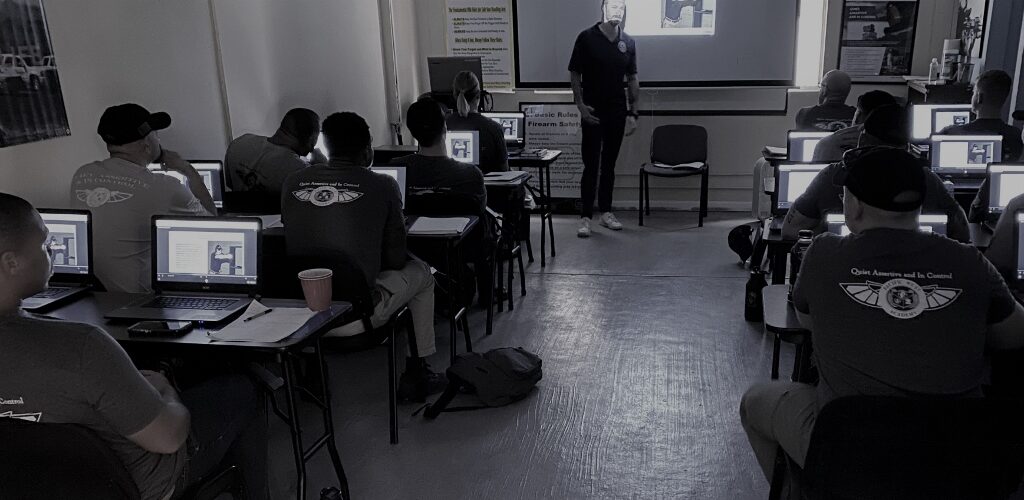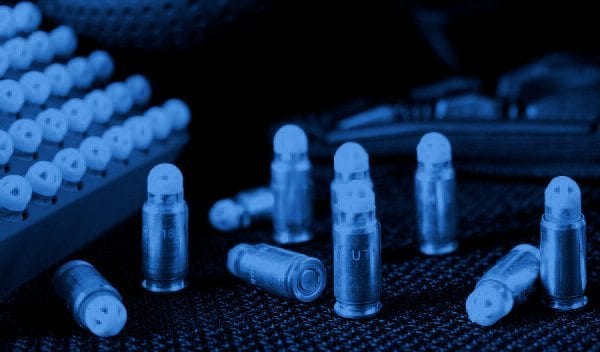

Ultimate Training Munitions (UTM) at PWA
Why use Ultimate Training Munitions (UTM) to supplement firearms training?
Police and military personnel, often use simulated Ammunition or “sim rounds,” during training scenarios in high threat situations. The private security industry is steadily growing, putting more personnel on the street that have not been formally trained to handle armed conflict. Sim round training offers the ability for executive protection agents to receive the same type of scenario based training as military or law enforcement.
We at Pacific West Academy use it during our executive protection training program with students that are going into the field for the first time or are continuing their personal protection education.
Scenario Based Training
Using UTM in scenario training requires students to make decisions with more stress and environmental distractions than when utilizing paper or steel targets. Deciding to shoot or not shoot by looking at a two-dimensional target is simply finding the weapon on the flat surface. Moving, three-dimensional targets that can conceal a weapon or create distractions makes an agent take extra time to discern whether he/she should shoot or not shoot. Shooting positions can change, backdrops can change, target shape can change, etc.
A force-on-force scenario makes it tough for students to “game” the scenario, making training more about acting and reacting than memorization. “Gaming” scenarios is something most shooters have done at some point in their training career and you can see this in action during shooting competitions. This allows them to have faster drawing, shooting, transitioning and moving speeds because they know where targets, corners, and spaces are in relation to the drill. While this may look great on video, it does not necessarily help with training against an opponent. I say necessarily because it does help with your fundamentals concerning becoming faster overall. To quote Bolo Yeung in the movie Bloodsport “…but brick not hit back.” When a live target is entered into a shoot/no shoot scenario, people react differently.
The Munitions
The actual ammunition plays a large role in the training. Laser tag offers a similar type of force-on-force training without the possibility of pain. Round velocity is 375 fps, 25% faster than a paintball, which can be painful when not wearing proper protective gear. UTM training can instill a general sense of fear due to a sim round actually hitting a student. This isn’t true for all trainees, all still know that they cannot be killed by UTM rounds while wearing proper PPE, so some still react as if it is a game. However for most, it becomes a bit scarier to know that someone is shooting at you and you can be hurt. With this fear, training inadequacies become accentuated, allowing students to learn how to not expose themselves more than they should and place more accurate shots on target when in a hostile shooting scenario. Shooting accuracy can be scored as well using the UTM rounds. With a 2” group at 25 meters as a standard, training for indoor scenarios is easy, and deficiencies cant be “gamed” because of poor ammunition as the cause of a missed shot. UTM exposes poor shooting fundamentals during the scenarios because most shooters get frightened and tense when confronted with an enemy. In football this can be considered getting “alligator arms.” Students can work through this fear and become better marksmen with general training using UTM.
The Firearms
The UTM systems available for use also allow executive protection training with real firearms. While in training, the students are able to use the same style of pistol for UTM training as when shooting on a live fire range. Familiarization time can be extensive when using laser systems and paintball systems because they may not mirror the on-duty firearm a security professional might carry. UTM eliminates that by allowing the user to utilize his/her firearm, with specific attachments, to take part in force-on-force scenarios. Malfunctions happen, most shooters experience numerous malfunctions throughout their career. Correcting them becomes a cornerstone of firearm training and a life saving measure in a real gunfight. Using UTM and force on force scenarios directly shows students who have a malfunction, staged or otherwise, how important it is to have a working knowledge of how to correct malfunctions with firearm in a live situation. When this can be done with the same firearm an executive protection agent carries on duty, once again, it limits the time needed to familiarize the agent with his/her weapon when it is time to shoot live ammunition.
